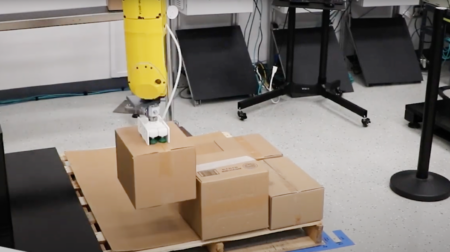Researchers at North Carolina State University have discovered a new law of physics that accounts for the friction that occurs when robots grip objects – particularly in wet environments, which should advance a wide range of robotic technologies.
“Our work here opens the door to creating more reliable and functional haptic and robotic devices in applications such as telesurgery and manufacturing,” said Lilian Hsiao, an assistant professor of chemical and biomolecular engineering at North Carolina State University and corresponding author of a paper on the work.
At issue is something called elastohydrodynamic lubrication (EHL) friction, which is the friction that occurs when two solid surfaces come into contact with a thin layer of fluid between them.
According to Hsiao, this would include the friction that occurs when a robotic claw lifts an object that has been coated with oil.
“Understanding friction is intuitive for humans – even when we’re handling soapy dishes,” Hsiao says. “But it is extremely difficult to account for EHL friction when developing materials that controls grasping capabilities in robots.”
To develop materials that help control EHL friction, engineers would need a framework that can be applied uniformly to a wide variety of patterns, materials and dynamic operating conditions, which is what researchers have discovered.
“This law can be used to account for EHL friction, and can be applied to many different soft systems – as long as the surfaces of the objects are patterned,” said Hsiao.
In this context, surface patterns could be anything from the slightly raised surfaces on the tips of fingers to grooves in the surface of a robotic tool.
The new physical principle, developed jointly by Hsiao and her graduate student Yunhu Peng, makes use of four equations to account for all of the physical forces at play in understanding EHL friction.
In the paper, the research team demonstrated the law in three systems: human fingers; a bio-inspired robotic fingertip; and a tool called a tribo-rheometer, which is used to measure frictional forces.
“These results are very useful in robotic hands that have more nuanced controls for reliably handling manufacturing processes,” said Hsiao.
“And it has obvious applications in the realm of telesurgery, in which surgeons remotely control robotic devices to perform surgical procedures.
“We view this as a fundamental advancement for understanding touch and for controlling touch in synthetic systems.”
The paper, Elastohydrodynamic friction of robotic and human fingers on soft micropatterned substrates, has been published in Nature Materials.








